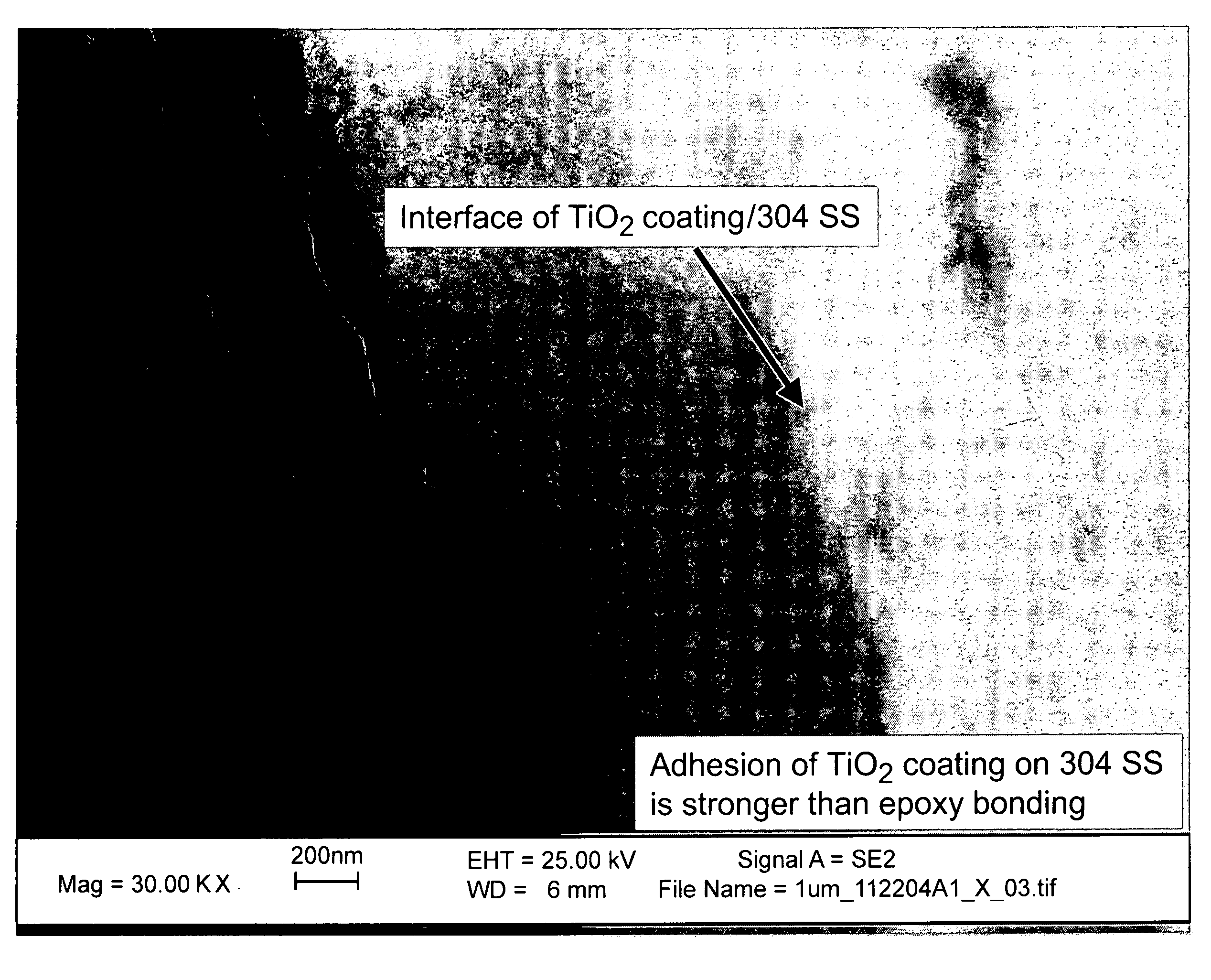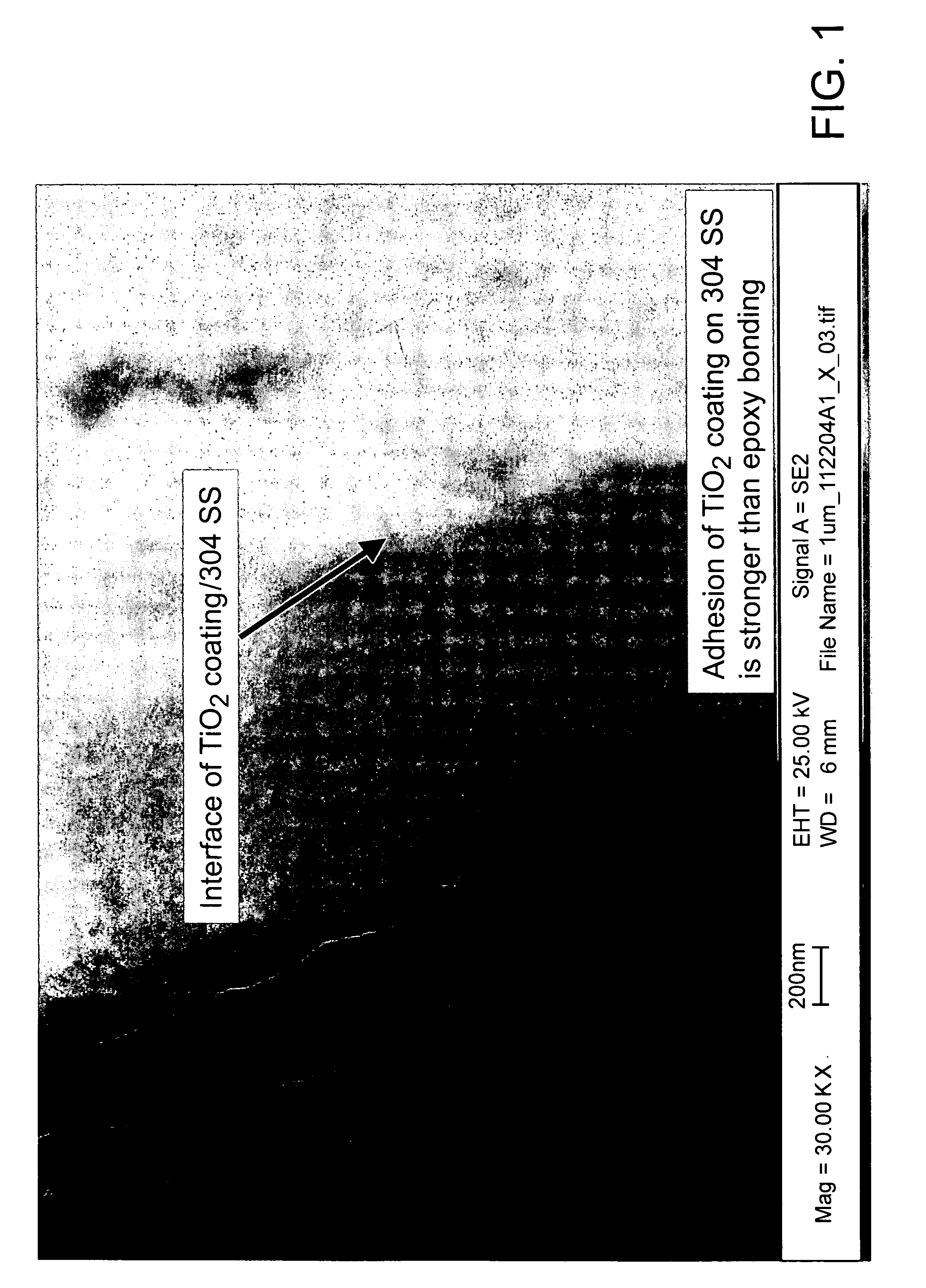Protective coating applied to metallic reactor components to reduce corrosion products into the nuclear reactor environment
a protective coating and reactor technology, applied in nuclear engineering, vacuum evaporation coating, nuclear elements, etc., can solve the problems of increasing occupational exposure of workers, affecting the safety of workers, so as to reduce the potential for activated corrosion products, and reduce the effect of contaminating the water of the reactor
- Summary
- Abstract
- Description
- Claims
- Application Information
AI Technical Summary
Benefits of technology
Problems solved by technology
Method used
Image
Examples
Embodiment Construction
[0020]Various metal oxides, e.g., TiO2, Ta2O5, ZrO2, AL2O3, HfO2, and CeO2 that may be applied by chemical vapor deposition (CVD) are materials widely used as corrosion barrier layers due to their thermal and chemical stability and low coefficient of thermal expansion. The main characteristic of refractory oxides is an excellent corrosion resistance under various corrosive and high temperature environments. Thus, coating a metallic component in a reactor water environment eliminates and / or mitigates the potential for the component to corrode, and thereby contaminate the reactor water with activated species. Nickel alloy components are of most concern because of the high level of cobalt contribution. The CVD treatment, as seen in FIG. 1, produces a conformal coating over the surface of a metal part, which fills the voids / spaces and protects the base metal of the part from corrosion. As a result of the treatment, the base metal alloy is protected from the reactor water environment and...
PUM
| Property | Measurement | Unit |
|---|---|---|
| Length | aaaaa | aaaaa |
| Length | aaaaa | aaaaa |
| Thickness | aaaaa | aaaaa |
Abstract
Description
Claims
Application Information
 Login to View More
Login to View More - R&D
- Intellectual Property
- Life Sciences
- Materials
- Tech Scout
- Unparalleled Data Quality
- Higher Quality Content
- 60% Fewer Hallucinations
Browse by: Latest US Patents, China's latest patents, Technical Efficacy Thesaurus, Application Domain, Technology Topic, Popular Technical Reports.
© 2025 PatSnap. All rights reserved.Legal|Privacy policy|Modern Slavery Act Transparency Statement|Sitemap|About US| Contact US: help@patsnap.com



